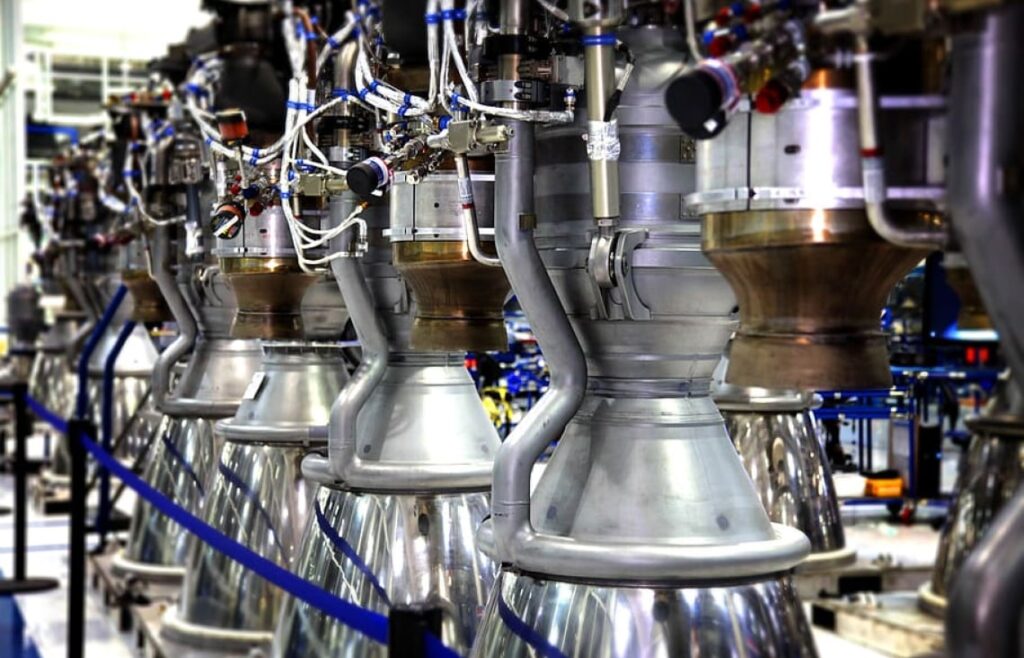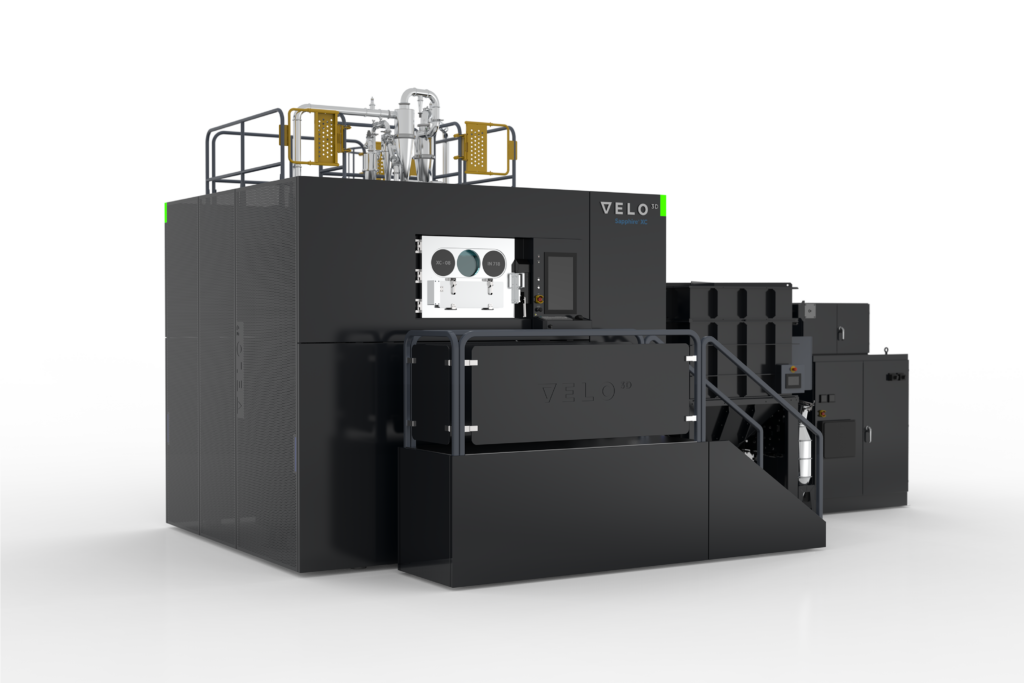Velo3D is set to lay off an additional 46 employees by the end of 2024 as part of its latest workforce reduction plan. According to a Form 8-K filing dated October 9, 2024, and signed by CEO Brad Kreger on October 11, approximately 32% of the company’s workforce will be affected. This follows an earlier reduction in August, which saw 63 jobs eliminated, representing about 30% of the workforce at the time. These successive layoffs will bring the total number of employees down to around 100 from the 210 workers employed earlier this year.
The company states that this reduction is aimed at “streamlining business operations, reducing costs, and creating further operating efficiencies.” Velo3D anticipates $1.3 million to $1.5 million in costs related to severance and other personnel expenses, which will be incurred in the fourth quarter of 2024, with the workforce reduction slated for completion by December.
The reduction in force coincides with Velo3D’s delisting from the New York Stock Exchange (NYSE) in September 2024, following several noncompliance notices. Despite a $12 million public offering and a 1-for-35 reverse stock split aimed at maintaining its NYSE listing, Velo3D was forced to transition to trading on the OTCQX Best Market under the ticker VLDX. While delisting is often seen as a setback, it aligns with broader financial difficulties the company has faced throughout 2024.
In the second quarter, Velo3D reported $10.3 million in revenue, a sharp decline from $25.1 million in the same period the previous year. The company also reported an adjusted net loss of $21.7 million, prompting management to implement aggressive cost-cutting measures.
Alongside these struggles, Velo3D managed to secure an $8 million licensing agreement with SpaceX in September. The deal grants SpaceX a non-exclusive license to Velo3D’s additive manufacturing technology, with $5 million paid for the intellectual property and $3 million for support services. While this agreement offers short-term financial relief, 3DPrint.com Executive Editor Joris Peels questioned whether the terms, which heavily favor SpaceX, may limit Velo3D’s future revenue potential and attractiveness to other clients. He further argued that the deal, although essential to the company’s cash flow, could complicate future growth.

Velo3D helps create space technology. Image courtesy of Velo3D.
Compounding the company’s troubles, questions have arisen about the compensation of Velo3D’s board members during this period of financial uncertainty. In September 2024, the board appointed Darryl C. Porter as an independent director, who will receive $40,000 per month and an additional $7,000 per day for work exceeding regular board duties. This compensation structure, which seems disproportionate to the company’s financial state, may raise concerns about the board’s priorities.
Moreover, Porter’s Director Agreement includes robust indemnification provisions, ensuring that his legal fees will be covered should he face any litigation related to his role. It’s worth noting that Porter’s history is “in licensing, intellectual property, litigation management, entertainment and new media.” These fields are less related to advanced manufacturing technology for space, energy, and aerospace than one might expect.
Porter’s appointment has led some industry watchers to speculate whether the board is preparing for potential legal challenges and protecting itself from future liability. While there is no concrete evidence that Velo3D’s board has hired separate legal counsel for itself apart from the company’s legal team, clauses in one document allowing directors to seek outside legal advice suggest that the board may be positioning itself defensively. These protections, combined with the significant compensation packages, raise suspicions about whether the board is preparing to exit or protect its members from the company’s ongoing financial distress.
Velo3D’s current struggles bear a striking resemblance to the challenges faced by another 3D printing company, Shapeways, which filed for Chapter 7 bankruptcy in July 2024. After failing to meet its growth projections and saddled with debt obligations, Shapeways ceased operations, and its board members and executive team resigned in conjunction with the bankruptcy filing. Shapeways had previously gone public through a SPAC deal, valued at $605 million, but ultimately could not survive in the increasingly competitive 3D printing sector.
As Velo3D navigates these challenges, the upcoming workforce reduction, combined with its delisting and potentially restrictive deals like the one with SpaceX, leave the company at a critical crossroads. The stock delisting and recent deals may indicate the company is in survival mode, focusing on short-term fixes to keep operations afloat. Meanwhile, the board’s substantial compensation and legal protections may signal a degree of self-preservation, raising questions about long-term strategic direction.
With its employee base reduced to approximately 100 people, and leadership focused on restructuring, Velo3D’s future remains uncertain. Whether the company can recover from its financial difficulties or if these moves signify deeper issues within its leadership will be critical for investors and industry stakeholders to watch.
There is a possibility that the recent turbulence in the 3D printing sector, particularly among SPAC-listed companies like Velo3D, may not be entirely coincidental. Observing the trajectory of these firms, it’s hard to ignore how prominent investors, such as Cathie Wood through ARK Investment, helped inflate their market value, only for these companies to later face financial struggles. The initial surge in speculative interest, followed by aggressive growth targets, may have set the stage for a boom-and-bust cycle, leaving many of these firms vulnerable.
At the same time, key collaborations—such as Velo3D’s licensing deal with SpaceX—provided short-term financial relief but may have imposed constraints on the company’s future prospects. Additionally, the intense competition sparked by the “laser wars,” in which Western firms like Velo3D and SLM Solutions raced to develop multi-laser metal 3D printers, seems to have coincided with the rise of Chinese manufacturers in the same technology. This raises the question of whether strategic tech transfers through collaborations with firms like Divergent and Velo3D have inadvertently provided China with a competitive edge in this sector. While these patterns may not suggest a deliberate orchestration, they point to complex global dynamics that have left many Western firms struggling to maintain their footing.

The Sapphire XC 1MZ 3D printer from Velo3D. Image courtesy of Velo3D.
One of the more unsettling aspects of this situation isn’t necessarily whether there was a coordinated effort to manipulate the 3D printing sector. Even if there were strategic decisions made behind the scenes, those involved could have ensured a successful outcome for shareholders. What’s truly troubling is that retail investors—those who saw the immense potential of 3D printing early on—are unlikely to benefit from their foresight. It feels as though the very people who believed in the technology and helped fund its rise are being punished for their optimism. The way the sector was hyped, particularly through platforms like Reddit, echoes the GameStop saga, where retail investors were encouraged to boost valuations only to be left holding the bag when things turned sour.
Ultimately, this highlights a broader disconnect between the worlds of public markets and venture capital. What happened here feels like an attempt to turn retail investors into venture capitalists without giving them the protections or rewards of that role. Even those who were completely right about 3D printing’s potential have been burned, simply because they were drawn into a structure that, for most, was destined to fail. You would need to be incredibly financially savvy to understand how you could be 100% correct about the promise of the technology and still find yourself holding a bad investment.
Now, all of the skeptics who once doubted the idea of bringing the machine tool industry back to the U.S. can swoop in and say, “Well, now that it’s cost nothing, it’s finally a good deal!” And, wouldn’t you know it, this is happening just as an entire era of policymaking is emerging to support it. The most devastating aspect of this is that Velo3D had – and still has – such a fundamentally promising technology.
Subscribe to Our Email Newsletter
Stay up-to-date on all the latest news from the 3D printing industry and receive information and offers from third party vendors.


